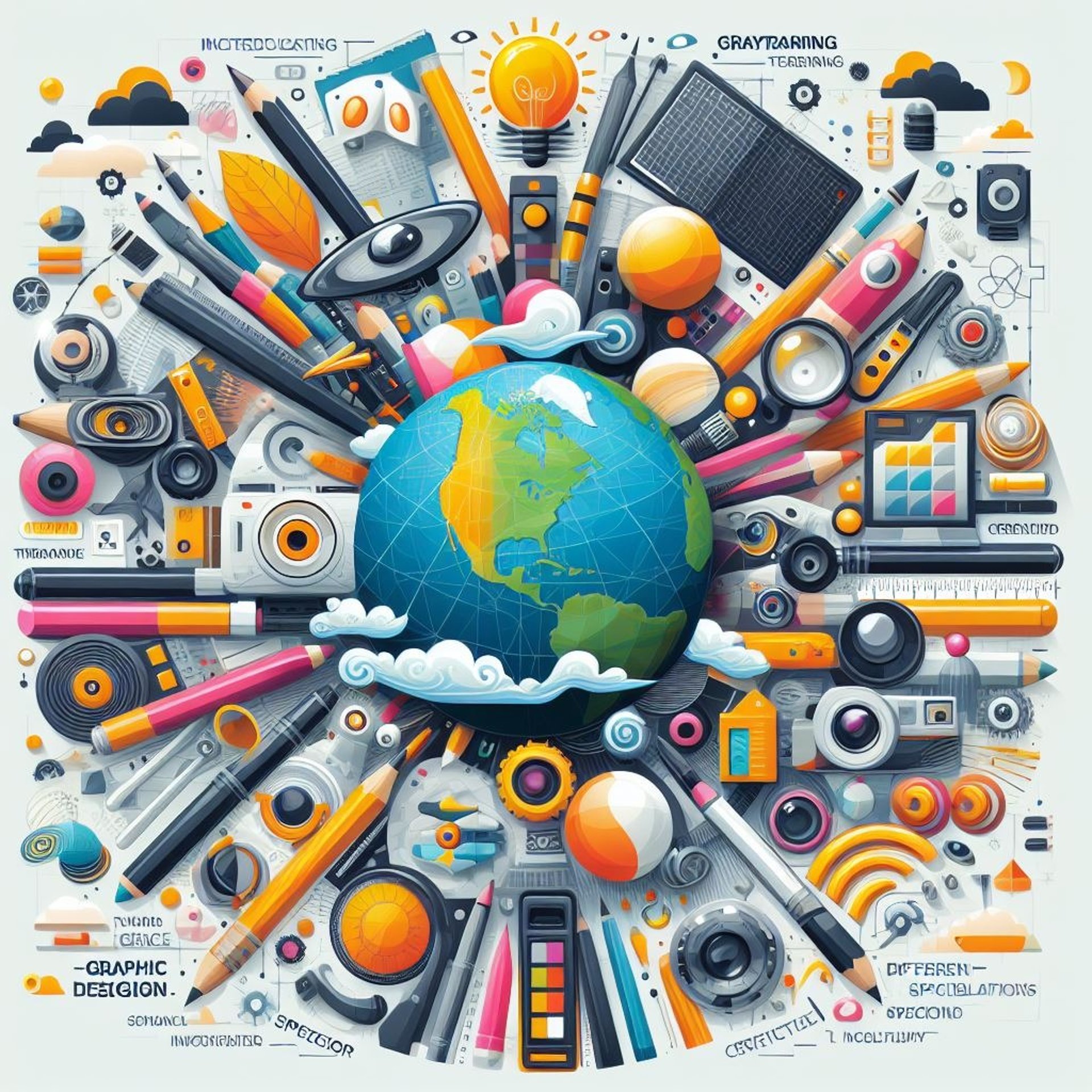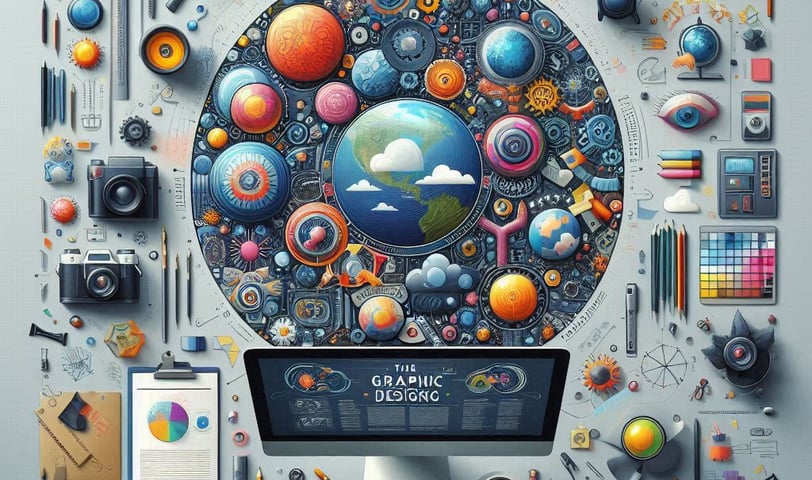
The Ultimate Guide to Graphic Designing: Unveiling the Art and Science
This article is a comprehensive, detailed guide to Graphic Designing.
IT SERVICES
4/23/20244 min read



Welcome to the ultimate guide to graphic design! In this comprehensive article, we will delve into the fascinating world of graphic design, exploring its artistry and scientific principles. Whether you are a beginner looking to learn the basics or a seasoned professional seeking inspiration, this guide has got you covered.
Introduction to Graphic Design
Graphic design is a creative discipline that combines art and technology to communicate ideas visually. It involves the use of various elements such as typography, images, colors, and layout to create visually appealing designs for print and digital media. Graphic designers play a crucial role in shaping how we perceive and interact with the world around us.
Fundamentals of Graphic Design
Before diving into the world of graphic design, it is essential to understand its fundamental principles. These principles serve as the building blocks for creating visually harmonious and effective designs. Some of the key fundamentals include:
Balance: Achieving a visual equilibrium by distributing elements evenly throughout the design.
Contrast: Creating a visual impact by juxtaposing different elements such as colors, shapes, and sizes.
Hierarchy: Organizing elements in a design to guide the viewer's attention and convey the intended message.
Typography: Choosing and arranging fonts to enhance readability and convey the desired tone.
Color Theory: Understanding the psychological and emotional impact of colors and using them effectively in design.
Tools and Software for Graphic Design
To bring their creative visions to life, graphic designers rely on a variety of tools and software. These tools not only facilitate the design process but also enable designers to experiment and push the boundaries of their creativity. Some popular tools and software used in graphic design include:
Adobe Photoshop: A powerful software for editing and manipulating images.
Adobe Illustrator: A vector-based software for creating illustrations and logos.
Adobe InDesign: A layout and publishing software for creating print and digital designs.
Sketch: A digital design tool specifically designed for user interface and user experience (UI/UX) design.
Canva: An online platform with a user-friendly interface for creating social media graphics, presentations, and more.
Graphic Design Process
Every graphic design project follows a systematic process to ensure the creation of high-quality and visually appealing designs. The process typically involves the following stages:
Research and Planning: Understanding the client's requirements, target audience, and project goals.
Ideation and Sketching: Generating ideas and rough sketches to explore different design concepts.
Digital Design: Transferring the selected concept to a digital format using design software.
Feedback and Revision: Collaborating with the client and incorporating feedback to refine the design.
Finalization and Delivery: Preparing the design for print or digital use and delivering the final product to the client.
Types of Graphic Design
Graphic design encompasses a wide range of disciplines, each with its unique characteristics and applications. Some of the most common types of graphic design include:
Visual Identity Design: Creating logos, brand guidelines, and other visual elements to establish a brand's identity.
Print Design: Designing materials such as brochures, flyers, posters, and packaging for print.
Web Design: Designing websites and user interfaces that are visually appealing and user-friendly.
UI/UX Design: Designing interfaces and experiences that optimize user satisfaction and usability.
Motion Graphics: Creating animated visuals and graphics for videos, presentations, and digital platforms.
Trends and Innovations in Graphic Design
Graphic design is a dynamic field that constantly evolves to meet the changing needs and preferences of the audience. Staying up-to-date with the latest trends and innovations is crucial for graphic designers to stay relevant and create designs that resonate with their audience. Some current trends in graphic design include:
Minimalism: Simplified designs with clean lines, ample white space, and focus on essential elements.
Typography as Art: Experimenting with typography to create visually striking and expressive designs.
Abstract and Geometric Designs: Using geometric shapes and abstract forms to create visually captivating designs.
Responsive Design: Designing for multiple devices and screen sizes to ensure a seamless user experience.
Sustainable Design: Incorporating eco-friendly practices and materials in design to promote sustainability.
Different Specializations of Graphic Design
Graphic design offers a wide range of specializations, allowing designers to explore their passions and hone their skills in specific areas. Some common specializations within graphic design include:
Logo Design: Focusing on creating unique and memorable logos that represent a brand's identity.
Typography Design: Specializing in the art of arranging and designing typefaces.
Illustration: Creating hand-drawn or digital illustrations to convey a specific message or story.
Packaging Design: Designing attractive and functional packaging for products.
Branding and Identity Design: Developing comprehensive visual identities for brands.
Career Opportunities in Graphic Design
The field of graphic design offers a multitude of career opportunities for individuals with a passion for creativity and visual communication. Some common career paths in graphic design include:
Graphic Designer: Creating visual designs for various mediums and industries.
Art Director: Overseeing the visual style and creative direction of a project or organization.
UI/UX Designer: Designing user interfaces and experiences for digital platforms.
Web Designer: Creating visually appealing and user-friendly websites.
Brand Identity Designer: Developing visual identities and brand guidelines for companies.
Future of Graphic Design
As technology continues to advance and new mediums emerge, the future of graphic design holds exciting possibilities. With the increasing demand for digital experiences, graphic designers will need to adapt and embrace new tools and techniques. Augmented reality (AR), virtual reality (VR), and interactive design are some of the areas that are expected to shape the future of graphic design.
Conclusion
Graphic design is a captivating blend of art and science that plays a crucial role in shaping our visual world. From the fundamentals to the latest trends, this guide has provided an overview of the diverse aspects of graphic design. Whether you are considering a career in graphic design or simply want to appreciate the beauty of visual communication, this guide has hopefully given you valuable insights into the art and science of graphic design.
We hope this is helpful. Please let us know if you have any questions.
We appreciate your attention. Please like and share. Thanks
info@buzzyedge.com
